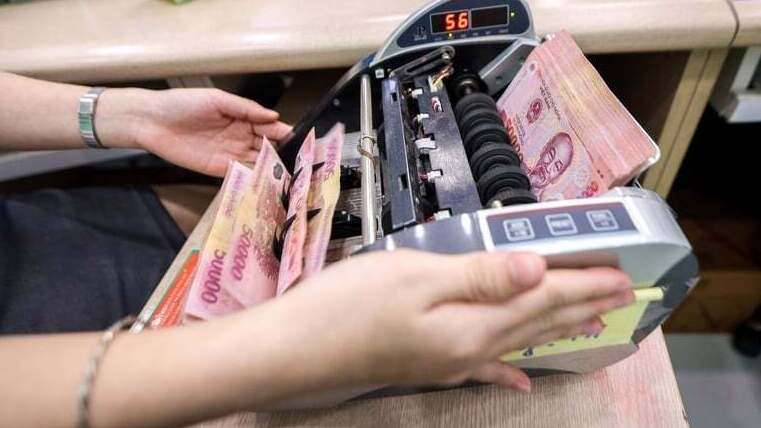Shareholding beyond regulatory limits and cross-ownership in credit institutions have declined, while control by major shareholders has also been curbed, the central bank added.

clerk counts VND bank notes. Photo by The Investor/Trong Hieu.
Currently, cases of shareholders and related parties exceeding ownership limits are mostly confined to state-owned enterprises. However, those state-owned enterprises under ministries and agencies as well as commercial banks face challenges in forcing these shareholders to divest.
Although the 2024 Law on Credit Institutions tightened rules on ownership, cross-investment, and bank manipulation, regulators still face major challenges in detecting cases where shares are concealed through nominees, the SBV said.
This creates a risk of opaque operations in credit institutions, which can only be uncovered and identified through investigations by law enforcement agencies.
In addition, it is not easy to identify links between companies, especially those not yet public, the central bank said.
To better monitor cross-ownership, the SBV said it will continue supervising the safety of credit institutions to prevent risks.
The bank will intensify inspections of shareholding ratios, bank share transactions, and large customer lending, including corporate bond investments, to detect operational violations, particularly in lending, investment, equity contributions, and bank share acquisitions.
The SBV also urged ministries and agencies to oversee enterprises to ensure that they comply with regulations when investing, contributing capital, or acquiring shares in credit institutions; use borrowed funds, especially bank loans, properly and efficiently; and maintain debt safety and timely repayment.
Legally, the central bank will continue reviewing and proposing amendments to regulations if necessary to improve the legal framework on share ownership under the Law on Credit Institutions.
Regarding bad debt resolution and bank restructuring, the SBV said that as of end-August 2025, the on-book bad debt ratio, excluding MBV30, Global Petroleum Bank, NCB Neo31, Vikki Bank32, and Saigon Bank, stood at 1.71%.
According to Deputy Governor Pham Quang Dung, the handling of banks under compulsory transfer has made substantial progress after one year of implementation.
Their total assets, deposits and outstanding loans have all expanded, while bad debts have been gradually resolved. Several banks have turned profitable or reduced losses compared with the same period in 2024.
Regarding Saigon Commercial Bank (SCB), which experienced a run triggered by the arrest of real estate tycoon Truong My Lan in October 2022, the SBV submitted a report dated September 15, 2025 to the government, seeking higher-level approval for the bank’s restructuring plan.
Notably, to strengthen prudential standards across the system, the central bank issued a circular on capital adequacy ratios for commercial banks and foreign bank branches.
It has also been studying the latest guidelines under Basel III - an internationally agreed set of measures developed by the Basel Committee on Banking Supervision (BCBS).
These strategic moves aim to enhance Vietnam’s banking risk management framework and steer the sector toward greater safety, transparency, and alignment with international practices.
According to Law on Credit Institutions, effective from July 1, 2024, an institutional shareholder is not allowed to own more than 10% of the charter capital of a credit institution; and a shareholder and persons related to that shareholder must not own more than 15% of the charter capital.
In addition, a major shareholder of a credit institution and related persons are not allowed to own more than 5% of the charter capital of another credit institution.
Total outstanding loans for a customer, a customer and related persons of that customer of a commercial bank or cooperative bank, foreign bank branches, people's credit funds, and microfinance institutions must not exceed: 14-23% from the effective date of the amended law until 2026; 13-21% from 2026; 12-19% from 2027; 11-17% from 2028; 10-15% from 2029.
Total outstanding loans for a customer must not exceed 15% of the non-bank credit institution's equity; total outstanding loans for a customer and related persons of that customer must not exceed 25% of the non-bank credit institution's equity.
Some large institutional shareholders at the bank will be forced to divest and reduce their ownership ratio if their holdings exceed 10%.
